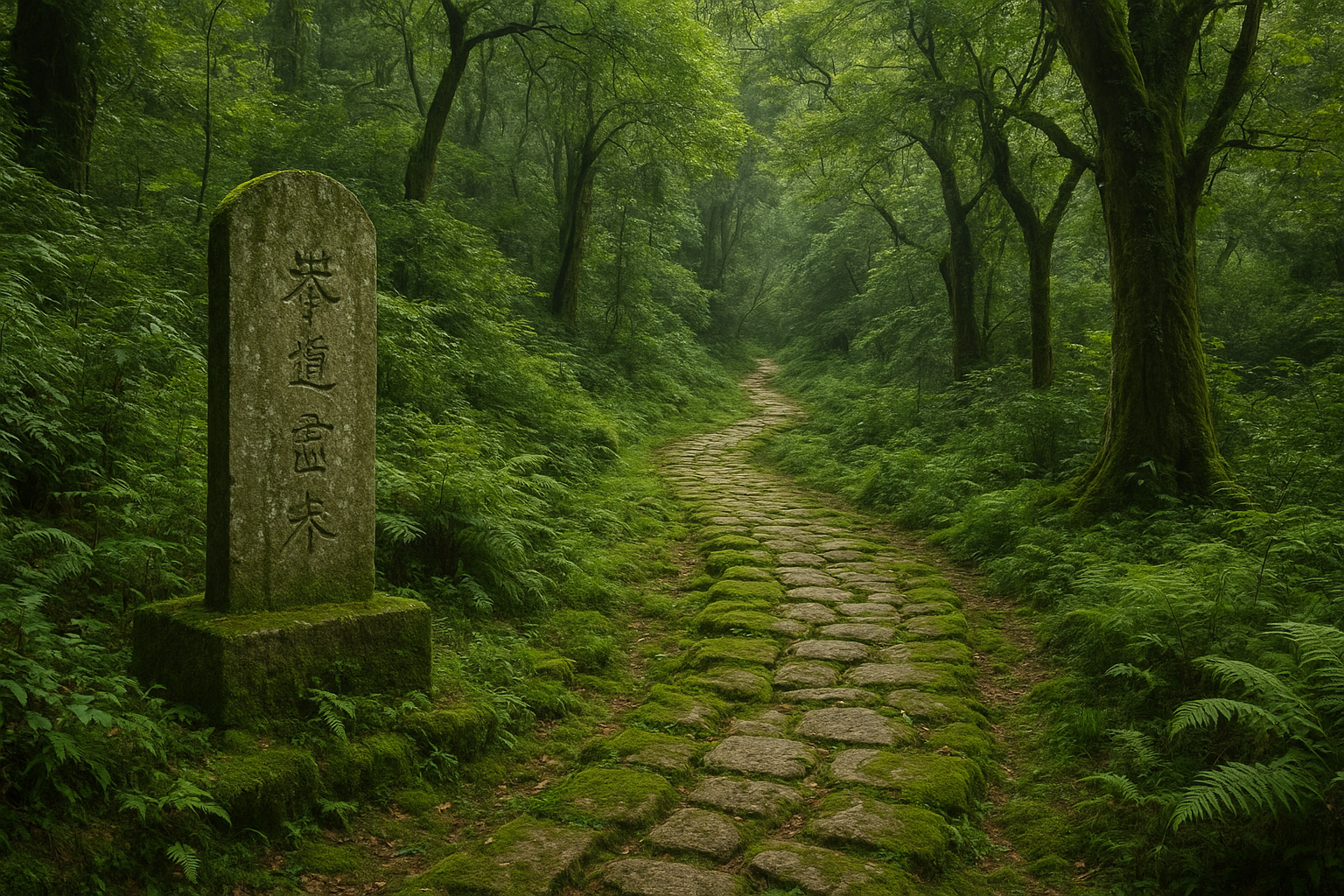The Forgotten Road: Rediscovering Ancient Daoist Paths
The rich tapestry of Daoism is interwoven with teachings, rituals, and sacred sites, many of which have been forgotten by time. Among these are the ancient Daoist paths—sacred trails that once hosted the contemplative footsteps of monks and seekers. These paths served as a journey into the self as much as a physical route across the land. Today, there is a resurgence of interest in rediscovering these mystical trails and reviving their ancient wisdom.
The Origins of Daoist Paths
Daoism, or Taoism, is a philosophical and spiritual tradition that emphasizes living in harmony with the Dao, which translates closely to “the Way.” Originating during the Eastern Han Dynasty as an organized religion, Daoism evolved from earlier shamanistic traditions and nature worship. The Daoist paths were more than mere roads; they were spiritual journeys laid out by the geography of ancient China.
“The essence of Daoism is a return to nature and a journey towards immortality—in body or spirit.”
The Purpose and Structure of the Paths
The ancient paths often connected remote mountainous temples and hermitages, weaving through lush landscapes, which provided the ideal backdrop for contemplation and meditation. These routes symbolized the intricate and often challenging path toward enlightenment, embodying both a literal and metaphorical journey.
- Spiritual Pilgrimage: Traversing these paths was part of a spiritual journey, where each step was a meditation and each breath a prayer.
- Communion with Nature: The natural surroundings allowed practitioners to align themselves with the tangibles of the world around them and the intangibles within.
- Solitude and Reflection: These secluded trails offered a respite from the distractions of the world, allowing for deep contemplation.
Rediscovery and Modern Relevance
In recent decades, there has been a growing interest in exploring these paths anew, ignited by a global resurgence in spiritual tourism and ecological consciousness. This revival is not just about historical curiosity; it’s a movement that taps into a universal longing for authenticity and connection with nature.
Reconnecting with Heritage
In China, efforts are underway to restore these paths, revitalize local communities, and integrate the trails into broader cultural tourism plans. This initiative is not only a boon for cultural preservation but also for local economies, bringing sustainable tourism to underserved areas.
Global Impact
Beyond China, the teachings of Daoism resonate worldwide, encouraging millions to seek wisdom from this ancient tradition. The ancient paths embody a commitment to reconnect with the earth, promoting practices like simplicity and eco-awareness that are increasingly relevant in today’s world grappling with environmental challenges.
Notable Ancient Paths
Several routes of historical significance continue to intrigue in the quest for ancient Daoist wisdom.
- Wudang Mountains: Renowned for their stunning scenery and deep spiritual significance, the paths crisscrossing these mountains are steeped in the mystical practices of internal alchemy.
- Mount Qingcheng: A cradle of Daoism, this site offers a labyrinth of trails that once led adepts to profound meditation and understanding.
- The Longhu Mountain Trails: Often considered as one of the birthplaces of Daoism, these paths are famed for their connection to celestial masters and ancient rituals.
A Personal Trek
For those who yearn to walk these paths themselves, the journey is not merely physical. It is a pilgrimage into one’s soul, tracing footsteps laid hundreds of years ago, engaging with the same vistas and pondering the same existential mysteries.
“The great way is not difficult for those who hold no preferences.” This ancient Daoist saying captures the essence of the journey, inviting travelers to embrace each path as it comes, with equanimity and openness.
The Legacy of Ancient Paths
Ultimately, rediscovering ancient Daoist paths enriches both the traveler and the tradition. By seeking these roads, we do not only preserve the paths themselves but also the ethos they embody—a harmony with nature, a balance between mind and body, and a quest for spiritual fulfillment.
“In returning and rest shall you be saved; in quietness and trust shall be your strength.”
Conclusion: Continuing the Journey
The forgotten Daoist roads are being walked once again, symbolizing perhaps not a grand return to ancient ways, but rather a modern quest for understanding and balance. As we tread softly upon these ancient paths, we carry forward their legacy—a reminder of the delicate, enduring connection between humanity and the cosmos.
